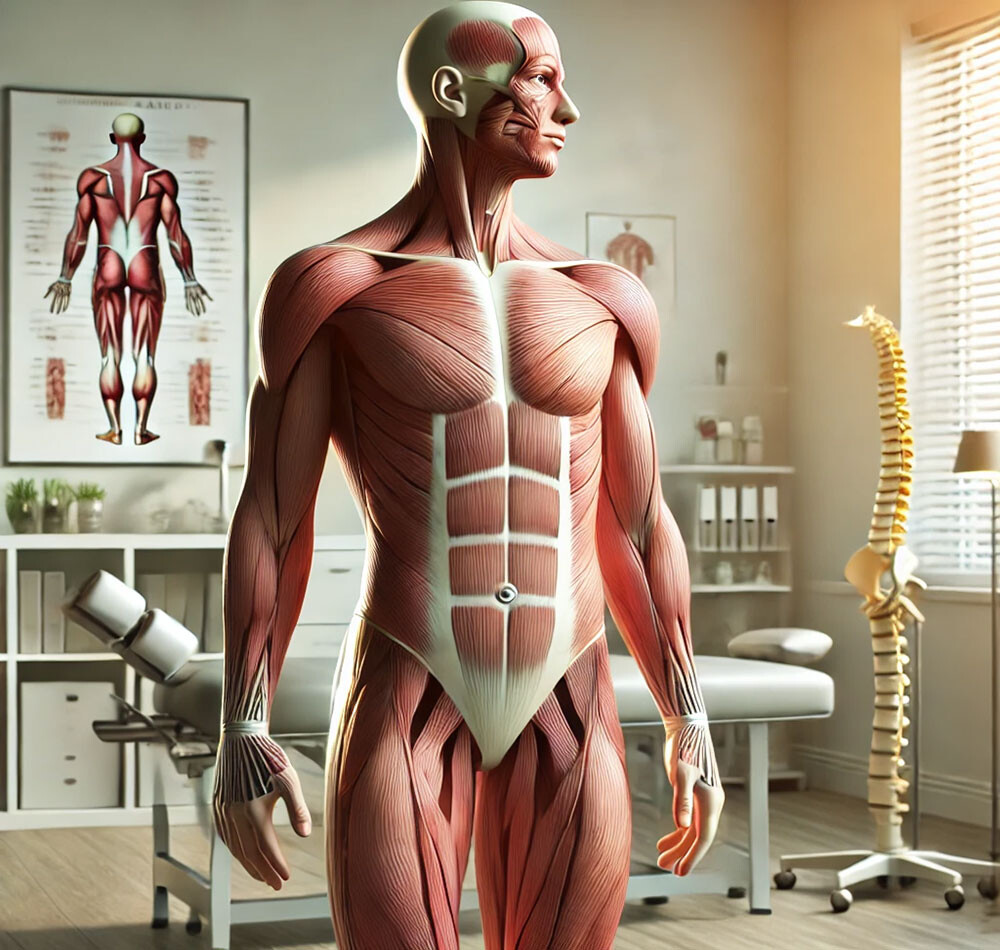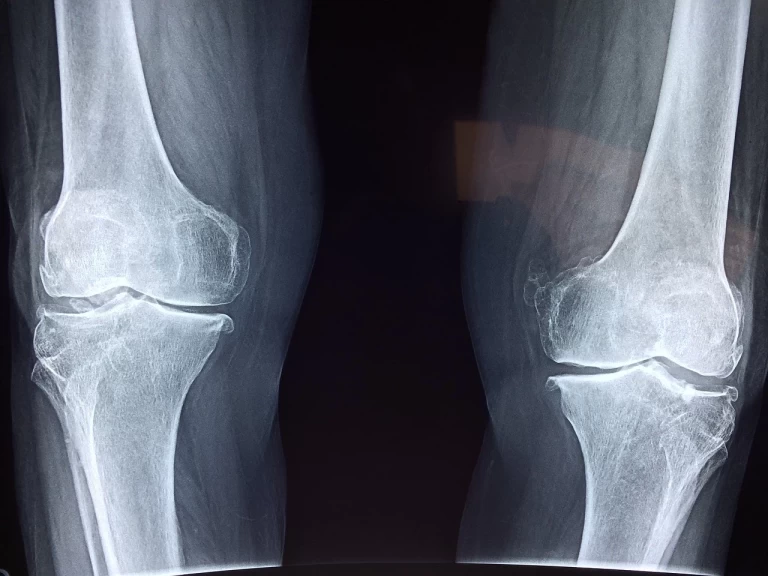
Understanding Musculoskeletal Issues
Muscles, joints, and inflammation are central to many pain-related conditions. Musculoskeletal issues such as back pain, joint stiffness, and muscle tension are among the most common complaints people face today. Whether from lifestyle factors, injuries, or aging, these issues can significantly impact quality of life. Chiropractic care offers a non-invasive, drug-free approach to managing these conditions, particularly by focusing on the spine and the body's alignment to relieve pain, reduce inflammation, and restore function.
In this article, we will explore how chiropractic care works to alleviate muscle pain, joint problems, and inflammation, along with a deeper dive into its principles and methodologies.
The Role of Muscles and Joints in Pain and Inflammation
1. Muscle Pain and Dysfunction
Muscles play a vital role in maintaining posture, enabling movement, and supporting the body. However, repetitive strain, improper posture, stress, and injuries can lead to muscle tension and pain. Myofascial pain syndrome, muscle strains, and tension headaches are just a few conditions linked to muscle dysfunction.
When muscles are strained or overused, they can develop knots, known as trigger points, which cause localized and referred pain. These trigger points can contribute to inflammation, further exacerbating discomfort and limiting range of motion.
2. Joint Pain and Stiffness
Joints, particularly those in the spine, shoulders, hips, and knees, are essential for mobility and stability. However, joint issues such as osteoarthritis, bursitis, and joint misalignment (subluxation) can cause pain and inflammation. When joints become inflamed, either due to wear and tear or improper alignment, it limits movement and leads to chronic pain.
3. Inflammation: The Body's Protective Response
Inflammation is the body's natural response to injury or stress. In the context of musculoskeletal conditions, inflammation can result from acute injuries (such as a sprained ankle) or chronic conditions (like arthritis). Although inflammation is a protective mechanism, chronic inflammation can lead to ongoing pain and degeneration of tissues, particularly in joints.
How Chiropractic Care Alleviates Muscle, Joint, and Inflammatory Conditions
Chiropractic care focuses on diagnosing and treating neuromuscular disorders, with a strong emphasis on manual spinal adjustments and manipulations. Chiropractors aim to restore proper alignment of the spine and joints, which, in turn, alleviates muscle tension and reduces inflammation.
1. Chiropractic Adjustments and Joint Health
One of the cornerstones of chiropractic care is the spinal adjustment, also known as spinal manipulation. Chiropractors use controlled, sudden force to adjust misaligned joints, particularly in the spine. Misalignment or subluxation in the spine can create undue stress on the surrounding muscles and joints, leading to pain and inflammation.
By realigning the spine and joints, chiropractic adjustments can:
- Restore joint function
- Improve range of motion
- Reduce pressure on nerves and muscles
- Decrease joint and muscle inflammation
- Spinal manipulation also improves blood circulation in the affected areas, promoting healing and reducing stiffness.
2. Muscle Relaxation and Tension Release
Chiropractic care can help alleviate muscle tension and pain by addressing underlying joint and spinal misalignments. Misaligned joints can cause muscles to become overactive in an attempt to compensate for the instability. This compensatory mechanism often leads to muscle tightness, spasms, and trigger points.
Chiropractic adjustments release tension from the muscles by restoring proper alignment, allowing muscles to function without strain. Chiropractors may also use soft tissue therapies such as myofascial release and trigger point therapy to target muscle pain directly. Techniques such as stretching, massage, and instrument-assisted manipulation help reduce muscle stiffness and encourage relaxation.
In addition to these manual techniques, chiropractors may recommend specific exercises to strengthen weak muscles and restore balance to muscle groups.
3. Reducing Inflammation Through Chiropractic Care
Inflammation, whether in muscles or joints, is often a result of underlying mechanical dysfunction. For instance, when a joint is misaligned, the body compensates by activating surrounding tissues, which can lead to irritation and inflammation over time. Chiropractic care addresses these mechanical problems by ensuring that the body's musculoskeletal system is properly aligned, reducing the inflammatory response.
Chiropractic adjustments and therapies can reduce inflammation by:
- Enhancing blood flow and oxygen supply to affected tissues
- Promoting lymphatic drainage to remove inflammatory substances
- Reducing muscle tension, which often exacerbates inflammation
- Stimulating the nervous system may help modulate inflammatory responses.
Chiropractic Techniques for Muscles, Joints, and Inflammation
Chiropractors use a range of techniques to target different aspects of musculoskeletal health, including pain relief, inflammation reduction, and joint function restoration.
1. Spinal Manipulation
The most commonly used technique in chiropractic care, spinal manipulation, involves applying a controlled force to joints in the spine to correct misalignment. This technique not only relieves pressure on the joints and nerves but also restores normal motion to the spine, which can ease muscle tension and reduce inflammation.
2. Soft Tissue Therapy
Soft tissue therapies focus on the muscles, tendons, and ligaments surrounding the joints. Chiropractors use techniques such as myofascial release, massage, and trigger point therapy to relieve muscle tension, improve circulation, and decrease inflammation. These therapies are often used in conjunction with spinal adjustments to provide comprehensive treatment.
3. Ultrasound and Electrical Stimulation
Some chiropractors use therapeutic modalities like ultrasound and electrical stimulation to enhance healing and reduce inflammation. Ultrasound therapy uses sound waves to penetrate deep into tissues, promoting blood flow and reducing swelling. Electrical stimulation, on the other hand, sends low electrical impulses to the muscles, which can relieve pain and improve muscle function.
4. Exercise and Rehabilitation
Chiropractors often prescribe therapeutic exercises to complement their manual treatments. Strengthening and stretching exercises help patients maintain flexibility, correct muscle imbalances, and prevent future injuries. Rehabilitation programs designed by chiropractors focus on restoring proper movement patterns and improving the stability of muscles and joints.
Benefits of Chiropractic Care for Musculoskeletal Health
Chiropractic care offers several benefits for those suffering from muscle and joint pain, as well as inflammation:
Pain Relief: By addressing the root cause of musculoskeletal pain, chiropractic care provides long-term pain relief without the need for medication or surgery.
Improved Mobility: Restoring joint alignment and reducing muscle tension enhances the range of motion, allowing patients to move more freely and comfortably.
Enhanced Healing: Chiropractic adjustments improve blood flow and nerve function, which speeds up the healing process and reduces the risk of future injuries.
Non-Invasive: Chiropractic care is a safe and non-invasive alternative to more aggressive treatments, such as surgery or long-term medication use.
Case Studies: Real-Life Examples of Chiropractic Success
Case 1: Chronic Back Pain and Inflammation
A 45-year-old woman suffered from chronic back pain due to degenerative disc disease and inflammation in her lower back. After undergoing regular chiropractic adjustments, her spinal alignment improved, and inflammation was reduced. Within weeks, her pain levels decreased, and she regained her ability to perform daily activities without discomfort.
Case 2: Sports-Related Joint Pain
A 30-year-old athlete experienced knee pain and inflammation after a sports injury. Chiropractic care, including joint manipulation and soft tissue therapy, helped restore proper knee alignment and reduce inflammation. The treatment plan also included rehabilitative exercises to strengthen the surrounding muscles, allowing him to return to his sport pain-free.
Conclusion
Chiropractic care offers an effective, non-invasive solution for managing muscle and joint pain, as well as reducing inflammation. By addressing the root cause of mechanical dysfunction in the body, chiropractic treatments promote natural healing, relieve pain, and restore mobility. Whether you’re dealing with chronic pain or recovering from an injury, chiropractic care can be a valuable tool in your wellness journey.
Incorporating chiropractic techniques into your care plan can significantly improve your quality of life by addressing musculoskeletal issues at their core, reducing inflammation, and preventing future pain. Always consult with a licensed chiropractor to create a personalized treatment plan tailored to your specific needs.



